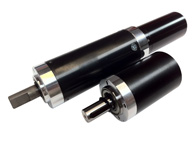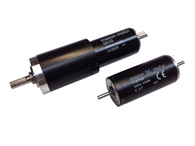Saving Time and Minimizing Complexity by Creating a Rescue Robot With CompactRIO and LabVIEW
Team SUAVE 2.0, from the Swinburne University of Technology, consists of Ben Smith, Jeremy Wu, and me. Ben and Jeremy are the defending champions of the 2011 inaugural NI Autonomous Robotics Competition (ARC). Jeremy earned a robotics and mechatronics engineering degree, and Ben and I completed a double degree in robotics and mechatronics engineering and computer science and software engineering.
For our application for the 2012 NI ARC, we needed to navigate to a disaster zone, rescue several coloured blocks from amongst the rubble consisting of grey blocks, and then navigate to several drop off zones so we could drop off and treat the blocks. This kind of problem is worthy of attention because it reflects one of the fields in which robotics is becoming a better option because of advances in technology. Robots will replace humans in the rescue field as they become more autonomous and versatile, so people can be rescued without endangering others’ lives.
3 Systems of the Rescue Robot
The robot we developed, as with all mechatronics systems, had three somewhat overlapping systems—mechanical, electrical, and control. The base of the mechanical system was a standard differential steering frame powered by Maxon DC motors and complemented by a few actuators powered by hobby servos and a stepper motor to manipulate the objects.
The electrical system featured a few hobby-grade controllers for the stepper motor and servos and some basic sensors including four Sharp infrared (IR) distance sensors; two Pololu IR reflectance sensors; two red, green, blue (RGB) LEDs; and two phototransistors. The IR sensors were used for obstacle detection at the front of the robot and on its side, while the reflectance sensors were used to detect the colour of the tiles the robot was on. This provided sufficient information for the localisation of the robot.
Finally, we performed the robot control completely on the CompactRIO controller programmed with LabVIEW system design software. To achieve the control requirements, we used the LabVIEW Robotics Module heavily. The main feature of this module that we benefitted from was the AD* path planning implementation and map representation data set. Using this implementation saved us time that we would have otherwise spent on developing, testing, and debugging if we had created a custom implementation from scratch. We configured the AD* on a directed graph to give costs to both driving forward and turning movements, which created paths that featured minimal turns and therefore were much faster than if we had ignored turning costs.
Striving for Simplicity
The benefit of our robot compared to other systems was that we aimed for simplicity both mechanically and in the software. In the software, we achieved this simplicity by using as much of the functionality provided by LabVIEW and its toolboxes as we could and by ensuring that the majority of the code executed in series. Due to the graphical nature of LabVIEW, finding bugs was simple because we could easily track the data flow and logic through each VI. Additionally, the highlighting capability provided a quick means of observing the state of the system during run time. The front panels of the VIs were easy to manipulate and provided vital information on the critical state variable of the robot. One key example was the map of the arena that plotted the robot’s position and any objects the robot had detected. Quickly developing this visualisation was vital to the debugging process used to develop the robot.
Improved Productivity With NI Training
At the beginning of the ARC, NI offered a training seminar to Team SUAVE 2.0 and the other Swinburne team. This training took only a few hours, but because of the intuitive nature of LabVIEW and the seminar’s hands-on interaction with the CompactRIO hardware, both teams quickly developed a sufficient level of understanding and hit the ground running using LabVIEW to develop our robots. In addition to providing this startup training, NI also delivered assistance through email. We quickly solved several problems during project development thanks to NI support.
An Efficient and Effective Platform
Because of time constraints of other university commitments, we needed an efficient and effective development platform to create a robot to complete the competition’s outlined task. CompactRIO and LabVIEW delivered this platform. We spent very little time implementing functionality, which helped us devote more time to developing efficient search algorithms for the coloured blocks and tuning hardware to provide optimal data.
Author(s):
Ben Smith – Swinburne University of Technology
Jason Austin – Swinburne University of Technology
Jeremy Wu – Swinburne University of Technology
Conveyor system for sowing machines and waste spreaders
The challenge was to find a high-performance gear motor with encoder and IP protection with very precise speed control for an outdoor application.
The application is a drive for the lamellas of conveying systems in agricultural machines that are installed on the outside underneath the seed / fertiliser tank. The drive is used on these machines in various ambient temperatures and humidity. It is a pressure compensation element required for ventilating the motor to prevent condensation build-up inside it.
The solution offered by KAG was a brushed DC motor with optical encoder for speed control and a low-backlash planetary gearhead. This complete unit comes with IP 54 protection so no further sealing is required at the customer’s site.
The low backlash on the planetary gearhead helped obtain precise speed control and enabled precise dosing of the conveyed material. The encoder has a protection cap as well as the 1 m long encoder and motor cable that is protected against water splashes. A cable screw connection prevents water from penetrating the cable bushing in the cap.
Together with the speed control, the low-backlash gear enables precise dosing of the conveyed material.
Contact maxon motor Australia in our Sydney office for further assistance Ph:+61 2 9476 477
National Instruments Annual Autonmous Robotics Competition
National Instruments Oceania has announced the participating teams for the 3rd annual National Instruments Autonomous Robotics Competition, a student robotics competition designed to encourage development and innovation in the field of robotics
A total of 22 teams will be participating in this year’s NI ARC, representing top universities from across Australia and New Zealand.
This year’s theme is “Gold Rush” and requires the teams to design autonomous robots which can navigate an obstacle course, identify and handle project.
Matej Krajnc, Managing Director for National Instruments Oceania said the competition allows students to demonstrate their engineering skills and broaden their career pathways.
The competition, which commences in April and concludes in September 2013, will involve each team developing an autonomous robot that will ultimately compete in a live competition with the objective of autonomously completing a set of predefined tasks in the shortest amount of time and earning the most points.
The students, working alongside NI engineers, will get the opportunity to showcase their robotics talents in front of a large audience from industry and academia at the live competition in September. Teams from the following universities and tertiary institutions will be competing in the 2013 competition: Charles Darwin University- Team CDU Curtin University – Curtin Robotics Club (CRoCs) Flinders University – Flinders Knights Griffith University – Gruebot La Trobe University – The Eagles Manukau Institute of Technology – MITe (MIT Engineering) Queensland University of Technology – QRC Engineering Queensland University of Technology – PrintReal Royal Melbourne Institute of Technology- Samme Royal Melbourne Institute of Technology – heRMIT Swinburne University – Swin- bots University of Adelaide – Team Smaug University of Auckland – The Non Existent University of Newcastle – UoN NIARC University of Sydney – Cats on Mars University of Sydney – Breakpoint University of Technology Sydney – UTS Robotics Society University of Western Sydney – Wanderlust University of Wollongong – UOW Robotics Team University of New South Wales – UNSW University of New South Wales – UNSW Mechatronics Victoria University of Wellington- Ownbot 2.0
Participating teams have each received a development kit featuring an NI single boardRIO 9636, and the NI LabVIEW 2012 with LabVIEW Robotics Module for the development of their autonomous robot. maxon motor is a proud sponsor of this event and have also provided each team with a gift voucher for purchase of maxon DC servo motors to use in the competition. Some teams have already taken advantage of this ordering maxon DC Servo motors and our ESCON controllers.
The winner of the NI Autonomous Robotics Competition will receive a prize of $3000, with $1500 for the runner-up and a bonus prize of $500 for the best robot design.
Additionally, all teams that successfully complete the tasks in this competition, regardless of their finishing position, will get to keep their development kits valued at over $20,000. Good luck to all the participating teams.
Contact maxon motor Australia in our Sydney office for further assistance Ph:+61 2 9476 4777
Motor of the week – Rare Earth 25mm brushed DC
Two DC motor and gearhead customer deliveries this week that showcase the size reductions of new technology in motors and gearheads.
Pictured here are two examples of the maxon DC brushed motor fitted with a planetary gearbox. For comparison we have shown both the new and old version of a gearbox and the new and old version of a DC motor. Figure 1. depicts the older model 42mm gearhead in combination with a 35mm DC motor and beside is the new gearhead with the same reduction ratio. It is easy to see just how much shorter the new planetary gearhead is, in fact it represents a length reduction in this case of 45.4mm. On top of this the new gearbox is 260g lighter and also stronger. Figure 2. Showcases the old and new version of the 25mm Rare Earth brushed DC motor, the RE25. The new RE25 motor is fitted with a 32mm ceramic planetary gearbox and the old RE25 motor is shown by itself. Both the old and new DC motor are rated at 20W, however the new motor is 11.5mm shorter. New materials including ceramics, high grade magnets and winding technologies are to thank. For planetary gearheads in particular, ceramic materials have greatly improved the wear characteristics of the moving parts allowing higher speeds, higher torque transmissions and improved lifespan. For brushed DC motors it is the combination if high grade NdFeB magnets and the ironless rhombic winding structure that give a DC motor with no magnetic detent cogging and very dynamic performance. Winding angles, sintering methods, magnetic return material and brush composition are just some of the many constantly improving aspects of maxon DC motors. Over 8% of maxon motor revenue is funnelled into motor, gearbox and controller research and development. The motor and gearbox improvements shown here are clear example of maxon motor innovation and why they continue to release smaller and stronger DC mini and micro motors every year.
Contact maxon motor Australia in our Sydney office for further assistance Ph:+61 2 9476 4777
Have you downloaded the latest driven magazine yet?Available at iTunes or Googleplay
https://play.google.com/store/apps/details?id=com.maxonmotor.magazine.android&hl=en
https://itunes.apple.com/us/app/maxon-magazine-driven/id567739711?mt=8





